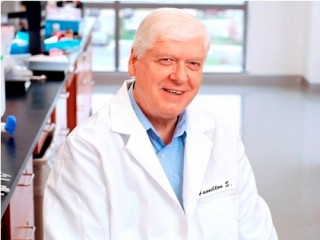
Hamilton O. Smith biography
Date of birth : 1931-08-23
Date of death : -
Birthplace : New York City,U.S.
Nationality : American
Category : Science and Technology
Last modified : 2022-08-23
Credited as : microbiologist, DNA cleavage discoveries, Nobel laureate, molecular biology
0 votes so far
Trained as a physician, Hamilton O. Smith studied molecular biology and genetics in his spare time, and was 31 before taking his first research post, at the University of Michigan.
He won the Nobel Prize for Medicine in 1978, shared with Werner Arber and Daniel Nathans, for their discovery of a new class of 'restriction enzymes' which recognize specific characteristics of nucleotides in a molecule of deoxyribonucleic acid (DNA) and cleave there, dividing the molecule at that point. This has allowed researchers to elucidate the structure and coding of DNA molecules, constructing basic genetic maps of numerous organisms, and offers the potential to correct genetic illnesses.
Smith is a co-founder of Celera Genomics, and in 1995 he led the team that accomplished the first sequencing of a bacterial genome, at the Institute for Genomic Research, where he serves as a trustee. Since 2002 he has been at the forefront of a project, funded by the U.S. Department of Energy, that seeks to create a genetically-engineered single-cell organism with the fewest genes necessary to sustain life, capable of feeding and reproducing itself.
He has directed a team at the J. Craig Venter Institute that works towards creating a partially synthetic bacterium, Mycoplasma laboratorium. In 2003 the same group synthetically assembled the genome of a virus, Phi X 174 bacteriophage.
Currently, Smith is scientific director of privately-held Synthetic Genomics, which was founded in 2005 by Craig Venter to continue this work. Currently, Synthetic Genomics is working to produce biofuels on an industrial-scale using recombinant algae and other microorganisms.
















